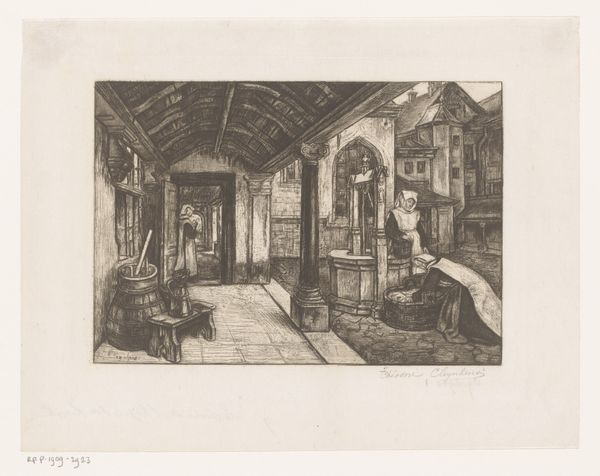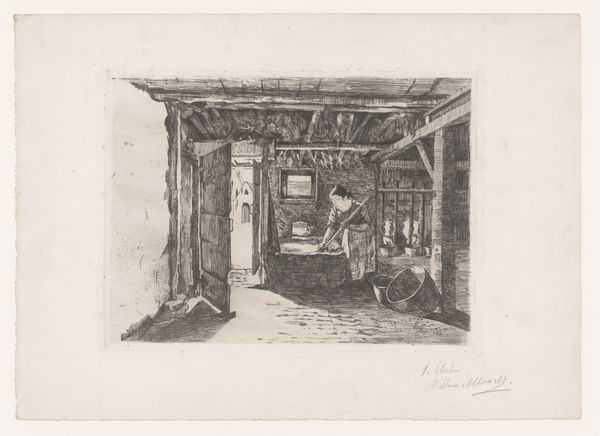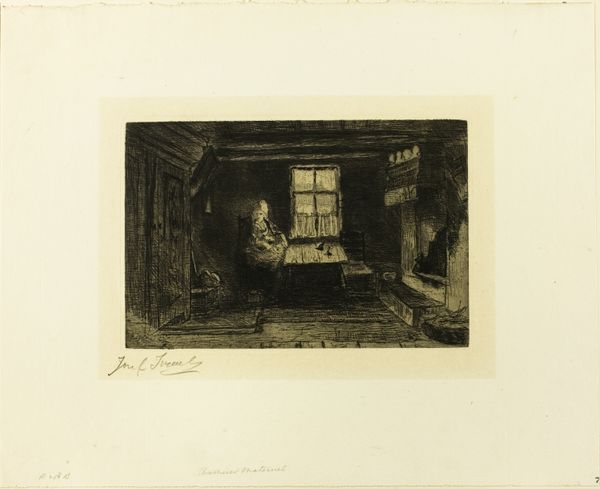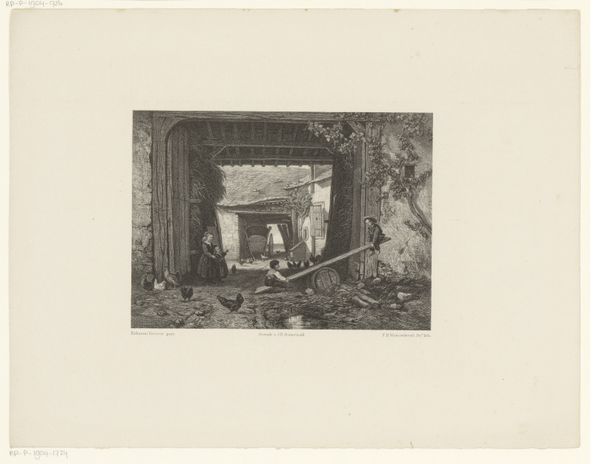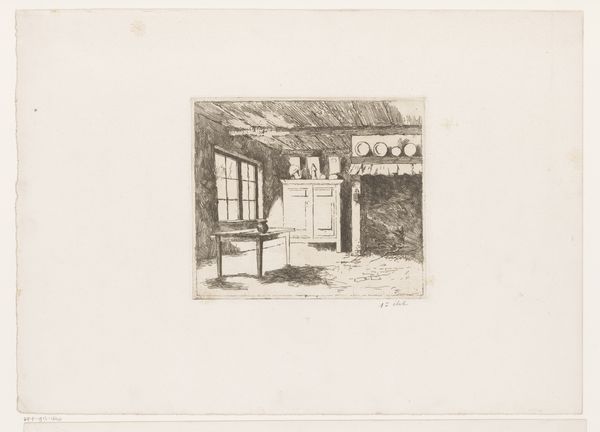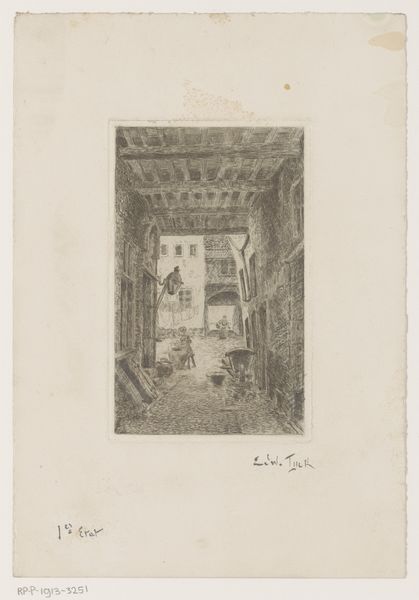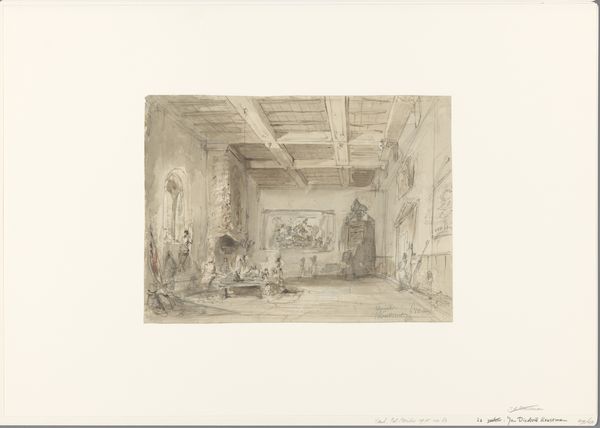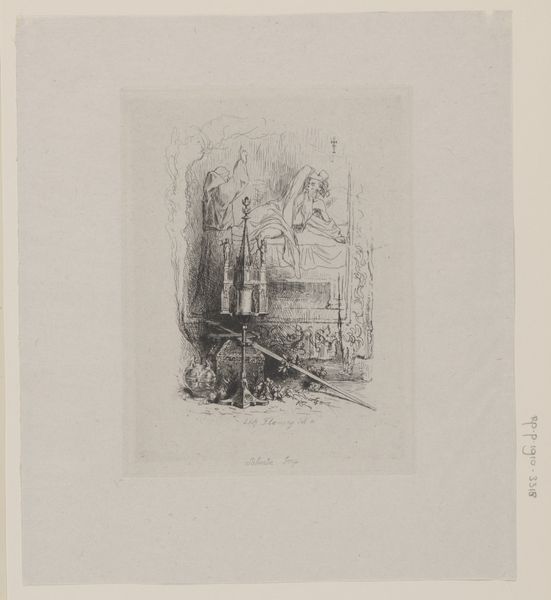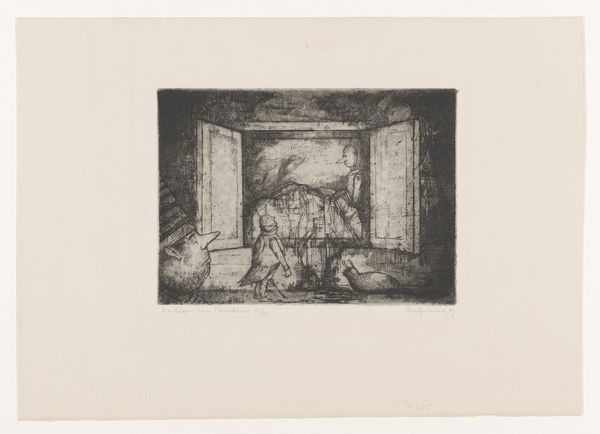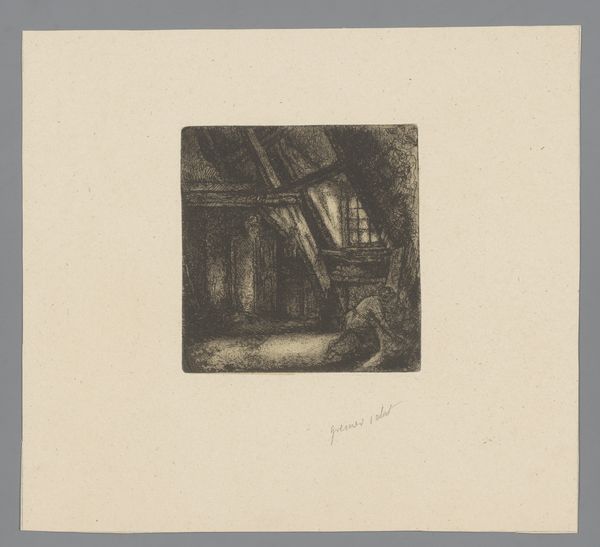
Kloostergang van het hospitaal te Lier met zusters bij een put 1851 - 1909
0:00
0:00
print, etching
#
medieval
# print
#
etching
#
old engraving style
#
landscape
#
genre-painting
#
realism
#
building
Dimensions: height 176 mm, width 237 mm
Copyright: Rijks Museum: Open Domain
Curator: What an evocative piece! This is "Kloostergang van het hospitaal te Lier met zusters bij een put," or "Cloister of the Hospital in Lier with Sisters at a Well," created between 1851 and 1909 by Théodore Joseph Cleynhens. It’s an etching. Editor: The crosshatching and subtle gradations give the entire scene a solemn atmosphere. It also brings out a strong feeling of enclosure. Almost prison-like, or monastic, despite the figures present. Curator: Yes, that tight line work is so intrinsic to understanding how prints like these were produced, emphasizing repetitive actions in the labour of image creation. Looking at this genre-painting from Cleynhens, what stands out is that the etching captures the everyday existence and the surrounding environment of those cloistered women. Think about the societal conditions that necessitated hospitals and religious orders, often as the only recourse for women's agency in health and societal participation. Editor: Exactly. There’s this interesting juxtaposition—the starkness of the architecture, the suggestion of communal living, and the wellspring, perhaps a lifeline, in the center. There’s a definite undercurrent speaking to ideas about women’s work. Notice the sisters' habits obscuring their bodies. How the physical toil—hauling water from the well, and other labor hinted at in the room beyond--becomes a potent commentary. Curator: It emphasizes labor within a confined, gendered sphere. How does that physical act tie to Cleynhens’s own labor as an artist reproducing it through the etching? What systems allowed this production to happen? Editor: The stark composition reinforces this point, it highlights how limited options were. Even this access to clean water feels freighted, the lack of color emphasizes a kind of hardship. Curator: The act of representing that daily existence, the conscious artistic choice to etch it, also suggests some reflection, at least. Consider the function of hospitals then, how they were both life-sustaining, yet sites of considerable social control, especially for marginalized bodies. Editor: And let's not ignore how the artist chooses to depict them! Overall, an artwork such as this makes us reconsider the complex dynamics of 19th-century gender roles. Curator: Precisely, seeing the social and labor frameworks opens a dialogue beyond just the image itself.
Comments
No comments
Be the first to comment and join the conversation on the ultimate creative platform.
